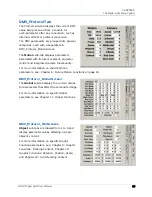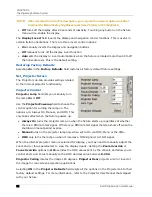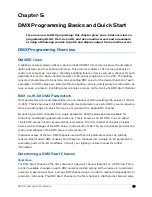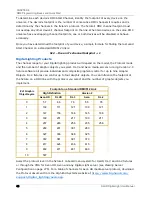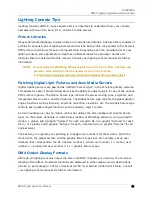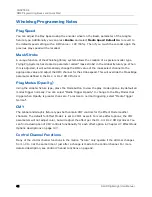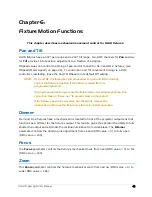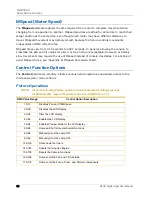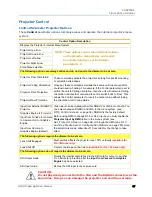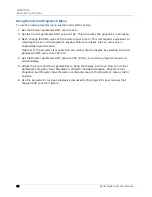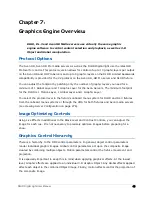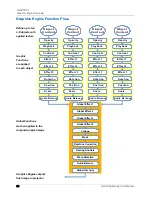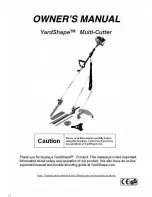
CHAPTER 5
DMX Programming Basics and Quick Start
DLHD Digital Light User Manual
41
Lighting Console Tips
Lighting consoles differ in many aspects and it is important to understand how your console
operates with Axon HD, Axon, DL.3, and DL.2 media servers.
Fixture Libraries
Many sophisticated lighting consoles utilize pre-made fixture libraries. A fixture library consists of
profiles for various types of lighting fixtures and devices. Each profile corresponds to the fixture’s
DMX protocol and allows for ease of programming. Depending upon the manufacturer of your
lighting console, some parameters might have different labels for parameter names and
functions than are listed within this manual. Consult your lighting console manual for further
information.
NOTE:
Downloading the Wholehog Wheelset preferences for DL.2 and DL.3 fixtures will
provide a more intuitive order to encoder layout on the console.
(see http://www.flyingpig.com/support/hog3/downloads/library/index.shtml)
Patching Digital Light Fixtures and Axon Media Servers
Digital Lighting servers are patched as multiple “fixture types” in the Wholehog library systems.
This allows for ease of programming as well as the ability to adjust quickly for any of the various
DMX protocol options. The Motion fixture type controls the actual moving yoke, projector, and
integrated camera in DL.2 and DL.3 fixtures. The Global fixture type controls the global graphic
engine functions such as intensity, keystone correction, viewpoint, etc. The Graphic fixture type
controls each graphic object functions such as opacity, object, media.
An Axon media server has no motion control but utilizes the same Global and Graphic fixture
types. In the Fixture Schedule or Add Fixtures window of Wholehog software, you would add 1
motion, 1 global, and 9 graphic “fixtures” for each complete DL.3 (4 graphic “fixtures” for each
DL.2), or 1 global, and 9 graphic “fixtures” for each complete Axon (4 graphic “fixtures” for an
original Axon).
The best way to organize your patching is to assign user numbers for these items. Patch the
motion first, the global second, and the graphic fixture types last. For example, set up user
numbers that correspond to the DL.3 fixture number 1, where user number 1 = motion, user
number 2 = global, and user number 3–11 = graphic fixture types.
DMX Output Display Formats
Although all lighting consoles output the same 512 DMX channels per universe, the on-screen
labeling often differs. Parameter functions are displayed in either alpha-numeric descriptions
(strobe 1), percentage (0-100%) or decimal (0-255 for 8-bit and 0-65535 for 16-bit). Consult
your lighting console manual for further information.
Содержание DLHD High Definition Digital Light
Страница 8: ...viii DLHD Digital Light User Manual...
Страница 66: ...CHAPTER 5 DMX Programming Basics and Quick Start 44 DLHD Digital Light User Manual...
Страница 74: ...CHAPTER 7 Graphics Engine Overview 52 DLHD Digital Light User Manual...
Страница 128: ...CHAPTER 12 Global Functions Collage Generator 106 DLHD Digital Light User Manual...
Страница 226: ...CHAPTER 13 Effect Mode Options Descriptions 204 DLHD Digital Light User Manual...
Страница 230: ...CHAPTER 14 Synchronizing Content 208 DLHD Digital Light User Manual...
Страница 284: ...CHAPTER 16 CMA Warp Editor 262 DLHD Digital Light User Manual...
Страница 318: ...APPENDIX C Safety Information 296 DLHD Digital Light User Manual...



